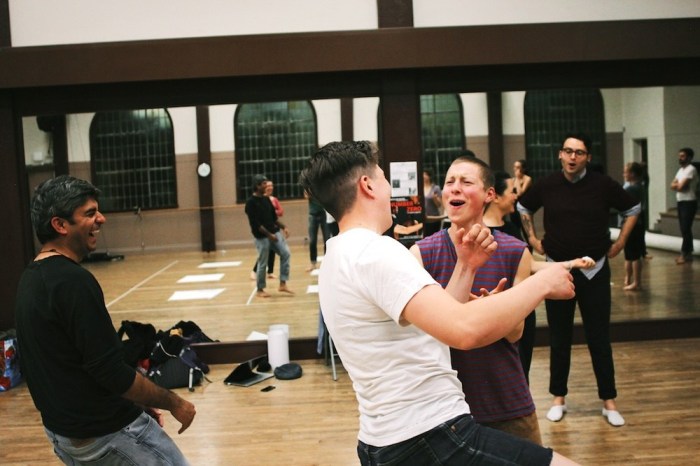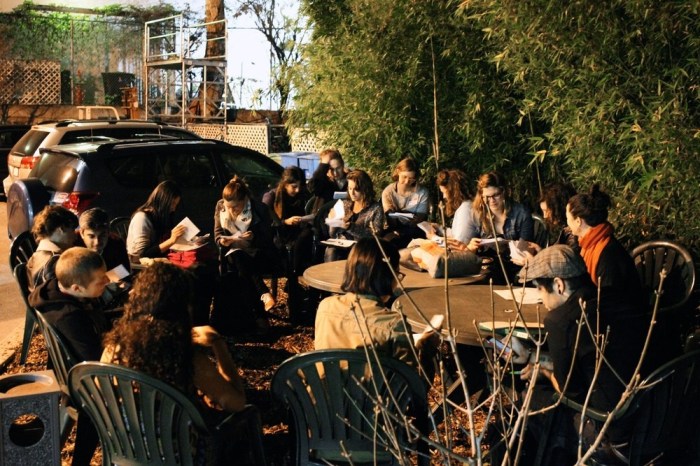WEEK FIVE
Over the past week, students have interviewed a person with a unique perspective on public space. Students then reinterpreted these interviews into 2-minute monologues for the class – monologues that ranged from socio-political explorations of public space across countries to the struggle of a child trying to grasp at the nebulous concept of public space. Some employed humor and rhythm, while others were sober and emotionally challenging.
A poignant theme has emerged through our discussions in this class–what is the role of personal identity as an artist or designer, and how might we reconcile this identity (which often represents privilege) when telling the stories of others. Do we even have the right to tell the stories of others, or is this practice too wrought with appropriation? To tackle this question from a place of personal experience, Ghigo and Erika both shared the philosophical struggles they face in their respective fields of urban design and performance.

Ghigo’s story pulls from the poetry of Pier Paolo Pasolini during the Italian student protests of 1968. While the police represented oppression on the surface, the men behind the uniforms were of working class backgrounds, often doing their job with little say in the matter. While the students cried for revolution, they did so from a place of societal privilege and comparatively few obstacles ahead of them in life. Pasolini challenged the popular notions of who was the ‘power’ and who was the ‘people’ between the standoffs of police and students.

This is much like the challenge of the urban designer today. How does one improve the quality of the public realm – surely a noble and egalitarian cause – without assisting the rampant gentrification boiling in our major cities today? Surely the poor deserve just as high a quality of public space as the rich, but how do we create this without displacing those struggling to afford ever higher rents? San Francisco’s Parklets, a product of Ghigo’s work with local arts collective Rebar, are intended to give space back to people in the most ardently public manner, but what do we make of the eventual association with gentrification? We are left with more questions than answers.
Erika struggles with the difficult positions of identity and her art looking back at Chorus of the Stones, her performance piece inspired by the stories of North Korean refugees. A brief NPR piece about the training of North Korean journalists to sneak footage and information to counterparts in South Korea led to the journey that would take Erika to South Korea and into the lives of countless North Korean refugees. Even after the performance derived from these experiences came to be, Erika kept harboring questions of her right to these stories. Were they hers to tell? Was her art form the strongest way to tell this story? Would it have been better handled or had more impact in the hands of another artist? She grappled with her place of privilege, conscious of how her ability to hop on a plane to Seoul with such ease contrasted so starkly with the struggles of those she was flying to meet… But what if these stories were never told at all?
Like Ghigo, the philosophical paradoxes of Erika’s work leave her without conclusion or consolation. As artists and designers we have a responsibility for positive impact in the world, but this is not a cut and dry venture. Our work cannot be extricated from our identities, nor our identities from the politics of our work and those whose lives we work amongst.


















